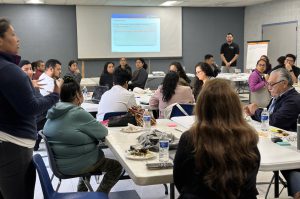
Advancing a Collaborative Agenda in Southeast LA
Advancing a Collaborative Agenda in Southeast LA In 2022, the California Community Foundation (CCF) launched the Regional Recovery Hub to strengthen place-based coordination in Los Angeles County
Variable Definitions:
Disability Status: The percentage of the population that has serious difficulty with hearing, vision, cognition or ambulation; or who reports having difficulty bathing/dressing or performing errands such as shopping
Source:
American Community Survey (ACS), 5-year estimates, Table B18101
Years Available*:
2012 – 2023
*Note: Each year of available data shown above is a 5-year estimate, or an average of data collected over a five year period. 5-year estimates are used to increase the reliability of the data at small geographies like neighborhoods and census tracts. The years shown on the NDSC map represent the final year of the five year average (e.g. “2010” represents 2006-2010 data, “2011” represents 2007-2011 data, and so on). For the most impactful comparison of data over time, the ACS recommends comparing non-overlapping years (e.g. 2010-14 with 2015-19).
Disability Status
The American Community Survey defines a disability as having serious difficulty with hearing, vision, cognition and ambulation, or with tasks such as bathing and dressing or errands like shopping. However, disability is a dynamic concept that can change based on technological advances, social structures and an individual’s health. Understanding the portion of the population that has a disability is important for federal government agencies to distribute funds and develop programs and policies for people with disabilities. For example, the Americans with Disabilities Act uses data about functional limitations to ensure that all people have access to resources like public transportation, regardless of disability status.
Citation:
American Community Survey. 2017 Subject Definitions. Link.

Advancing a Collaborative Agenda in Southeast LA In 2022, the California Community Foundation (CCF) launched the Regional Recovery Hub to strengthen place-based coordination in Los Angeles County

Every ten years, the federal government conducts a “census,” where it counts every person living in the United States. The constitution mandates that all people

Our nation’s population is aging and will continue to grow older over the next several decades. There are currently 49.2 million people ages 65 and
